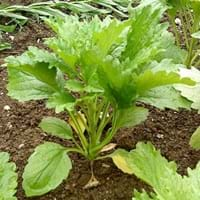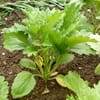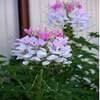Life Span
Annual
Perennial
Type
Flowering Plants
Shrub
Origin
China
North America, United States, Northeastern United States, Mid-Atlantic United States, Southeastern United States, Canada
Types
Ribbon series, Milady aster
Red chokeberry, Purple chokeberry
Habitat
Cold Regions
Anthropogenic, Boggy areas, Cliffs, Fens, Swamps, Terrestrial, Wet lands, Woodlands
USDA Hardiness Zone
3-9
3-8
Sunset Zone
1a, 1b, 2a, 2b, 3a, 3b, 4, 5, 6, 7, 8, 9, 10, 11, 12, 13, 14, 15, 16, 17, 18, 19, 20, 21, 22, 23, 24
A2, A3, 1a, 1b, 2a, 2b, 3a, 3b, 4, 5, 6, 7
Habit
Upright/Erect
Thicket/Colonizing
Flower Color
White, Yellow, Purple, Pink, Rose, Crimson, Blue Violet
Not Available
Flower Color Modifier
Bicolor
Not Available
Fruit Color
Not Available
Purplish-black
Leaf Color in Spring
Green
Not Available
Leaf Color in Summer
Green
Not Available
Leaf Color in Fall
Green
Not Available
Leaf Color in Winter
Light Green
Not Available
Leaf Shape
Arrowhead
Elliptic
Plant Season
Spring, Summer, Fall
Spring, Summer, Fall
Sunlight
Full Sun, Partial shade
Full Sun, Partial Sun, Partial shade
Growth Rate
Medium
Medium
Type of Soil
Loam, Sand
Clay, Loam
The pH of Soil
Acidic, Neutral
Acidic, Neutral, Alkaline
Soil Drainage
Well drained
Average
Bloom Time
Early Summer, Summer, Late Summer, Early Fall, Fall, Late Fall
Late Spring, Early Summer
Tolerances
Drought
Not Available
Where to Plant?
Container, Ground
Ground, Pot
How to Plant?
Seedlings
Cuttings, Divison, Seedlings
Plant Maintenance
Medium
Medium
Watering Requirements
Do Not over Water, Keep ground moist, Never Over-water, Requires a lot of watering, Requires regular watering
Average Water Needs, Do Not over Water, Requires regular watering
In Summer
Lots of watering
Lots of watering
In Spring
Moderate
Moderate
In Winter
Alternate Days
Average Water
Soil pH
Slightly Acidic
Acidic, Neutral, Alkaline
Soil Type
Loamy, Well drained
Clay, Loam
Soil Drainage Capacity
Loamy, Well drained
Average
Sun Exposure
Full Sun
Full Sun, Partial Sun, Partial shade
Pruning
Cut or pinch the stems, Remove damaged leaves, Remove dead branches, Remove dead leaves
Prune after flowering, Remove branches that rub together, Remove damaged leaves, Remove dead branches, Remove dead leaves, Remove diseased branches by the tool's blades dipped into the alcohol solution
Fertilizers
Compost, Well-rotted manure
10-10-10, All-Purpose Liquid Fertilizer, Apply N-P-K
Pests and Diseases
fungus
Red blotch
Plant Tolerance
Drought
Not Available
Flower Petal Number
Single, Double, Semi-Double
Not Available
Foliage Texture
Medium
Not Available
Foliage Sheen
Matte
Not Available
Attracts
Not Available
Not Available
Allergy
Asthma
Anaphylaxis
Aesthetic Uses
Beautification, Bouquets, Hanging Basket, Landscape Designing, Showy Purposes
Showy Purposes
Beauty Benefits
Not Available
Good for skin
Environmental Uses
Air purification, Food for insects, Versatility, Very little waste
Air purification, Food for birds, Wildlife
Medicinal Uses
Rheumatism
anti-cancer, Antioxidants, Cold
Part of Plant Used
Flowers
Fruits
Other Uses
Decoration Purposes, Employed in herbal medicine, Showy Purposes, Used as Ornamental plant
Pectin
Used As Indoor Plant
Yes
No
Used As Outdoor Plant
Yes
Yes
Garden Design
Bedding Plant, Container, Cottage garden, Rock Garden, Showy Tree
Foundation, Mixed Border
Botanical Name
CALLISTEPHUS chinensis
ARONIA melanocarpa
Common Name
China Aster
Black Chokeberry
In Hindi
चीन एस्टर
Black Chokeberry Shrub
In German
China Aster
Schwarz Aronia Strauch
In French
Chine Aster
Noir Chokeberry Arbuste
In Spanish
aster de China
Chokeberry negro Arbusto
In Greek
Κίνα Aster
Μαύρο Chokeberry θάμνων
In Portuguese
China Aster
Chokeberry preto Arbusto
In Polish
Chiny Aster
Krzew aronii
In Latin
Sinis Aster
Lichen Frutex
Phylum
Magnoliophyta
Magnoliophyta
Class
Magnoliopsida
Magnoliopsida
Family
Asteraceae
Rosaceae
Genus
Callistephus
Aronia
Clade
Angiosperms, Asterids, Eudicots
Angiosperms, Eudicots, Rosids
Subfamily
Asteroideae
Amygdaloideae
Number of Species
Not Available
Season and Care of China Aster and Black Chokeberry
Season and care of China Aster and Black Chokeberry is important to know. While considering everything about China Aster and Black Chokeberry Care, growing season is an essential factor. China Aster season is Spring, Summer and Fall and Black Chokeberry season is Spring, Summer and Fall. The type of soil for China Aster is Loam, Sand and for Black Chokeberry is Clay, Loam while the PH of soil for China Aster is Acidic, Neutral and for Black Chokeberry is Acidic, Neutral, Alkaline.
China Aster and Black Chokeberry Physical Information
China Aster and Black Chokeberry physical information is very important for comparison. China Aster height is 20.30 cm and width 25.40 cm whereas Black Chokeberry height is 182.88 cm and width 182.88 cm. The color specification of China Aster and Black Chokeberry are as follows:
China Aster flower color: White, Yellow, Purple, Pink, Rose, Crimson and Blue Violet
China Aster leaf color: Green
Black Chokeberry flower color: Not Available
- Black Chokeberry leaf color: Not Available
Care of China Aster and Black Chokeberry
Care of China Aster and Black Chokeberry include pruning, fertilizers, watering etc. China Aster pruning is done Cut or pinch the stems, Remove damaged leaves, Remove dead branches and Remove dead leaves and Black Chokeberry pruning is done Prune after flowering, Remove branches that rub together, Remove damaged leaves, Remove dead branches, Remove dead leaves and Remove diseased branches by the tool's blades dipped into the alcohol solution. In summer China Aster needs Lots of watering and in winter, it needs Alternate Days. Whereas, in summer Black Chokeberry needs Lots of watering and in winter, it needs Average Water.





